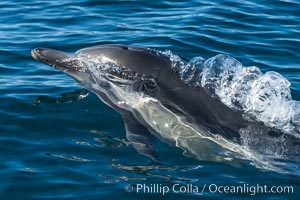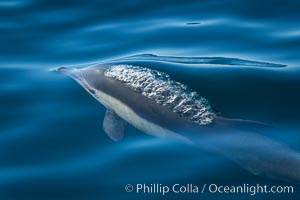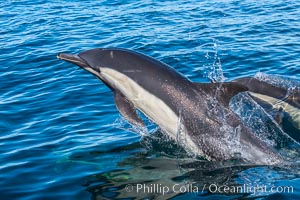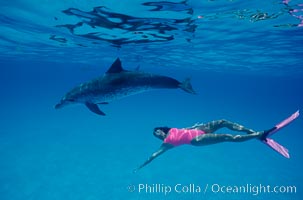
Atlantic spotted dolphin, Olympic swimmer Mikako Kotani.
Species: Atlantic spotted dolphin, Stenella frontalis
Location: Bahamas
Image ID: 00647
Species: Atlantic spotted dolphin, Stenella frontalis
Location: Bahamas
Image ID: 00647
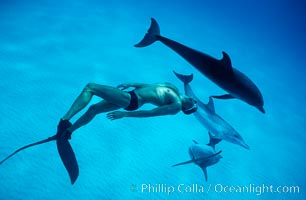
Atlantic spotted dolphin and Olympic champion swimmer Matt Biondi.
Species: Atlantic spotted dolphin, Stenella frontalis
Location: Bahamas
Image ID: 00018
Species: Atlantic spotted dolphin, Stenella frontalis
Location: Bahamas
Image ID: 00018
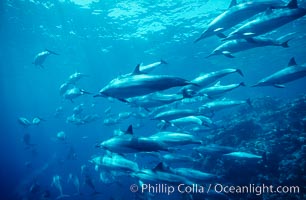
Hawaiian spinner dolphin, resting herd swimming along reef.
Species: Hawaiian spinner dolphin, Stenella longirostris
Location: Lanai, Hawaii
Image ID: 00108
Species: Hawaiian spinner dolphin, Stenella longirostris
Location: Lanai, Hawaii
Image ID: 00108
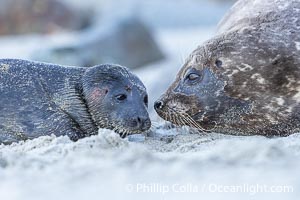
A newborn harbor seal pup, only a few minutes old, is nuzzled by its mother shortly after birth. Blood is still on the tiny pups fur coat. The pair will nuzzle frequently to solidify the bond they must maintain as the pup is nearly helpless. In just four to six weeks the pup will be weaned off its mothers milk and must forage for its own food.
Species: Pacific harbor seal, Phoca vitulina richardsi
Location: La Jolla, California
Image ID: 39073
Species: Pacific harbor seal, Phoca vitulina richardsi
Location: La Jolla, California
Image ID: 39073
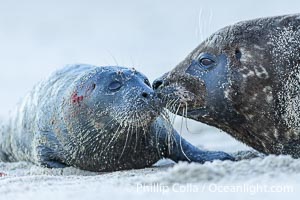
A newborn harbor seal pup in La Jolla, only a few minutes old, is nuzzled by its mother shortly after birth. Blood is still on the tiny pups fur coat. The pair will nuzzle frequently to solidify the bond they must maintain as the pup is nearly helpless. In just four to six weeks the pup will be weaned off its mothers milk and must forage for its own food.
Species: Pacific harbor seal, Phoca vitulina richardsi
Location: La Jolla, California
Image ID: 39077
Species: Pacific harbor seal, Phoca vitulina richardsi
Location: La Jolla, California
Image ID: 39077
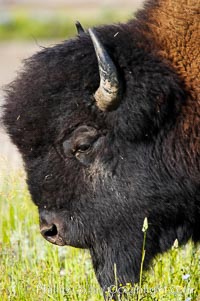
The bisons massive head is its most characteristic feature. Its forehead bulges because of its convex-shaped frontal bone. Its shoulder hump, dwindling bowlike to the haunches, is supported by unusually long spinal vertebrae. Over powerful neck and shoulder muscles grows a great shaggy coat of curly brown fur, and over the head, like an immense hood, grows a shock of black hair. Its forequarters are higher and much heavier than its haunches. A mature bull stands about 6 1/2 feet (2 meters) at the shoulder and weighs more than 2,000 pounds (900 kilograms). The bisons horns are short and black. In the male they are thick at the base and taper abruptly to sharp points as they curve outward and upward; the females horns are more slender.
Species: American bison, Bison bison
Location: Yellowstone National Park, Wyoming
Image ID: 13120
Species: American bison, Bison bison
Location: Yellowstone National Park, Wyoming
Image ID: 13120
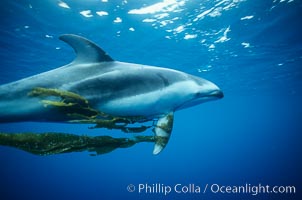
Pacific white sided dolphin carrying drift kelp.
Species: Pacific white-sided dolphin, Lagenorhynchus obliquidens
Location: San Diego, California
Image ID: 00043
Species: Pacific white-sided dolphin, Lagenorhynchus obliquidens
Location: San Diego, California
Image ID: 00043
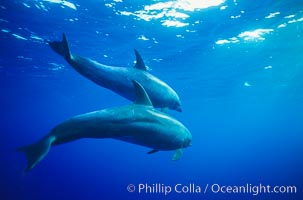
Pacific bottlenose dolphin swimming offshore of Guadalupe Island, Mexico.
Species: Bottlenose dolphin, Tursiops truncatus
Location: Guadalupe Island (Isla Guadalupe), Baja California, Mexico
Image ID: 00968
Species: Bottlenose dolphin, Tursiops truncatus
Location: Guadalupe Island (Isla Guadalupe), Baja California, Mexico
Image ID: 00968
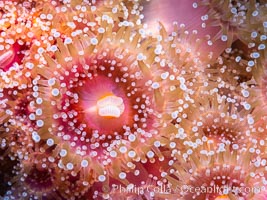
The corallimorph Corynactis californica, similar to both stony corals and anemones, is typified by a wide oral disk and short tentacles that radiate from the mouth. The tentacles grasp food passing by in ocean currents.
Species: Strawberry anemone, Corynactis californica
Location: San Diego, California
Image ID: 37212
Species: Strawberry anemone, Corynactis californica
Location: San Diego, California
Image ID: 37212
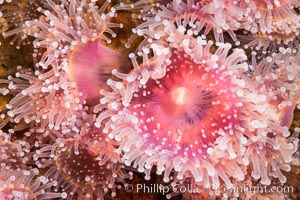
The corallimorph Corynactis californica, similar to both stony corals and anemones, is typified by a wide oral disk and short tentacles that radiate from the mouth. The tentacles grasp food passing by in ocean currents.
Species: Strawberry anemone, Corynactis californica
Location: San Diego, California
Image ID: 37215
Species: Strawberry anemone, Corynactis californica
Location: San Diego, California
Image ID: 37215
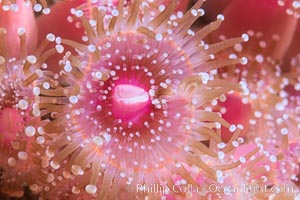
The corallimorph Corynactis californica, similar to both stony corals and anemones, is typified by a wide oral disk and short tentacles that radiate from the mouth. The tentacles grasp food passing by in ocean currents.
Species: Strawberry anemone, Corynactis californica
Location: San Diego, California
Image ID: 37201
Species: Strawberry anemone, Corynactis californica
Location: San Diego, California
Image ID: 37201
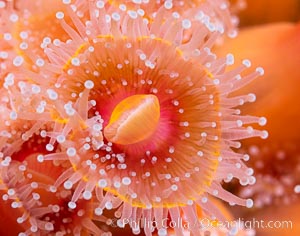
The corallimorph Corynactis californica, similar to both stony corals and anemones, is typified by a wide oral disk and short tentacles that radiate from the mouth. The tentacles grasp food passing by in ocean currents.
Species: Strawberry anemone, Corynactis californica
Location: San Diego, California
Image ID: 37208
Species: Strawberry anemone, Corynactis californica
Location: San Diego, California
Image ID: 37208
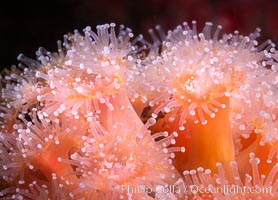
The corallimorph Corynactis californica, similar to both stony corals and anemones, is typified by a wide oral disk and short tentacles that radiate from the mouth. The tentacles grasp food passing by in ocean currents.
Species: Strawberry anemone, Corynactis californica
Location: San Diego, California
Image ID: 37202
Species: Strawberry anemone, Corynactis californica
Location: San Diego, California
Image ID: 37202
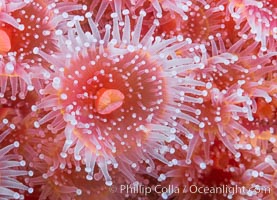
The corallimorph Corynactis californica, similar to both stony corals and anemones, is typified by a wide oral disk and short tentacles that radiate from the mouth. The tentacles grasp food passing by in ocean currents.
Species: Strawberry anemone, Corynactis californica
Location: San Diego, California
Image ID: 37203
Species: Strawberry anemone, Corynactis californica
Location: San Diego, California
Image ID: 37203
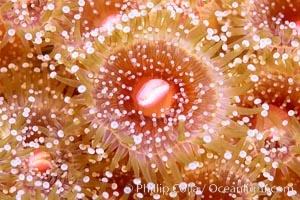
The corallimorph Corynactis californica, similar to both stony corals and anemones, is typified by a wide oral disk and short tentacles that radiate from the mouth. The tentacles grasp food passing by in ocean currents.
Species: Strawberry anemone, Corynactis californica
Location: San Diego, California
Image ID: 37209
Species: Strawberry anemone, Corynactis californica
Location: San Diego, California
Image ID: 37209
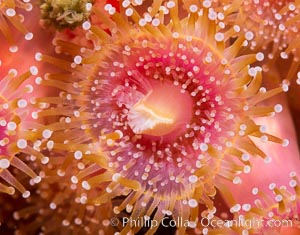
The corallimorph Corynactis californica, similar to both stony corals and anemones, is typified by a wide oral disk and short tentacles that radiate from the mouth. The tentacles grasp food passing by in ocean currents.
Species: Strawberry anemone, Corynactis californica
Location: San Diego, California
Image ID: 37210
Species: Strawberry anemone, Corynactis californica
Location: San Diego, California
Image ID: 37210
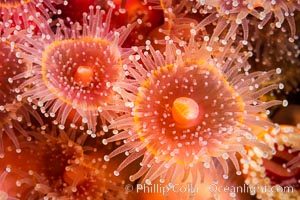
The corallimorph Corynactis californica, similar to both stony corals and anemones, is typified by a wide oral disk and short tentacles that radiate from the mouth. The tentacles grasp food passing by in ocean currents.
Species: Strawberry anemone, Corynactis californica
Location: San Diego, California
Image ID: 37213
Species: Strawberry anemone, Corynactis californica
Location: San Diego, California
Image ID: 37213

Sunset on the Del Mar Bluffs and Train Tracks, with North County coastline. The highest peaks in the distance are Santiago Peak and Modjeska Peak, the pair commonly known as Saddleback.
Location: Del Mar, California
Image ID: 37604
Location: Del Mar, California
Image ID: 37604
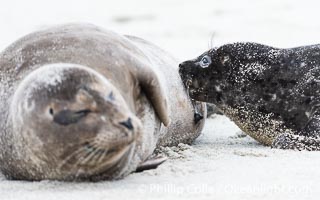
A young Pacific Harbor Seal pup nursing. Mother harbor seals will only nurse their pups for about four to six weeks, at which point the small seal is weaned and must begin to forage and fend for itself. That short period of time is crucial for the young seal to learn how to hunt, socialize and swim.
Species: Pacific harbor seal, Phoca vitulina richardsi
Location: La Jolla, California
Image ID: 39063
Species: Pacific harbor seal, Phoca vitulina richardsi
Location: La Jolla, California
Image ID: 39063
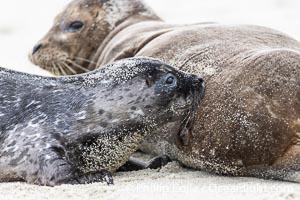
A young Pacific Harbor Seal pup nursing. Mother harbor seals will only nurse their pups for about four to six weeks, at which point the small seal is weaned and must begin to forage and fend for itself. That short period of time is crucial for the young seal to learn how to hunt, socialize and swim.
Species: Pacific harbor seal, Phoca vitulina richardsi
Location: La Jolla, California
Image ID: 39082
Species: Pacific harbor seal, Phoca vitulina richardsi
Location: La Jolla, California
Image ID: 39082
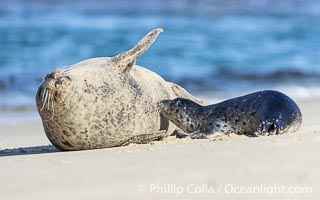
A young Pacific Harbor Seal pup nursing. Mother harbor seals will only nurse their pups for about four to six weeks, at which point the small seal is weaned and must begin to forage and fend for itself. That short period of time is crucial for the young seal to learn how to hunt, socialize and swim.
Species: Pacific harbor seal, Phoca vitulina richardsi
Location: La Jolla, California
Image ID: 39105
Species: Pacific harbor seal, Phoca vitulina richardsi
Location: La Jolla, California
Image ID: 39105
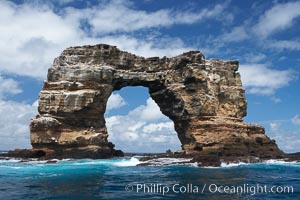
Darwin's Arch, a dramatic 50-foot tall natural lava arch, rises above the ocean a short distance offshore of Darwin Island. On June 10, 2021, Darwin's Arch broke and fell into the ocean, leaving behind two partial pillars.
Location: Darwin Island, Galapagos Islands, Ecuador
Image ID: 16621
Location: Darwin Island, Galapagos Islands, Ecuador
Image ID: 16621
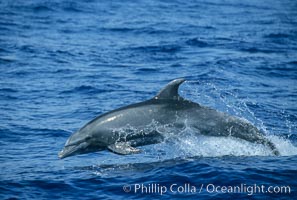
Pacific bottlenose dolphin.
Species: Bottlenose dolphin, Tursiops truncatus
Location: Maui, Hawaii
Image ID: 04564
Species: Bottlenose dolphin, Tursiops truncatus
Location: Maui, Hawaii
Image ID: 04564
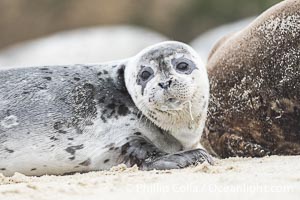
A young Pacific Harbor Seal pup with milk on its face from nursing. Mother harbor seals will only nurse their pups for about four to six weeks, at which point the small seal is weaned and must begin to forage and fend for itself. That short period of time is crucial for the young seal to learn how to hunt, socialize and swim.
Species: Pacific harbor seal, Phoca vitulina richardsi
Location: La Jolla, California
Image ID: 39130
Species: Pacific harbor seal, Phoca vitulina richardsi
Location: La Jolla, California
Image ID: 39130
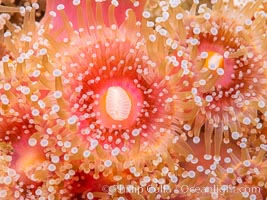
The corallimorph Corynactis californica, similar to both stony corals and anemones, is typified by a wide oral disk and short tentacles that radiate from the mouth. The tentacles grasp food passing by in ocean currents.
Species: Strawberry anemone, Corynactis californica
Location: San Diego, California
Image ID: 37211
Species: Strawberry anemone, Corynactis californica
Location: San Diego, California
Image ID: 37211
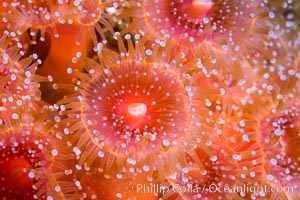
The corallimorph Corynactis californica, similar to both stony corals and anemones, is typified by a wide oral disk and short tentacles that radiate from the mouth. The tentacles grasp food passing by in ocean currents.
Species: Strawberry anemone, Corynactis californica
Location: San Diego, California
Image ID: 37200
Species: Strawberry anemone, Corynactis californica
Location: San Diego, California
Image ID: 37200
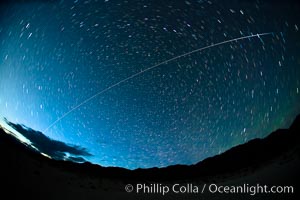
International Space Station flys over Death Valley shortly after sunset.
Location: Earth Orbit, Solar System, Milky Way Galaxy, The Universe
Image ID: 25247
Location: Earth Orbit, Solar System, Milky Way Galaxy, The Universe
Image ID: 25247
